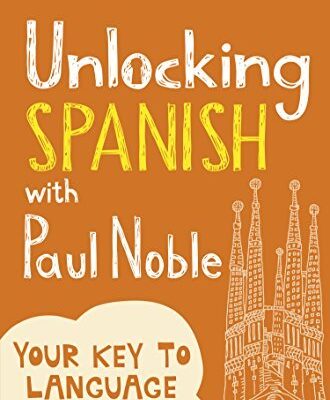Languages are rich tapestries of words, each thread offering a new hue of meaning and context. When it comes to translating English words into Spanish, one seemingly simple word like “mean” can unravel into a diverse array of interpretations. Understanding these nuances is key to mastering conversational Spanish.
- The Basics: “Mean” as in Significance
- “Mean” as in Average
- “Mean” in the Sense of Malice
- “Mean” as Intention or Purpose
- Nuanced Variations and Regional Differences
- Expanding Your Spanish Vocabulary: More Contexts for “Mean”
- “Mean” as in Intention or Implication
- “Mean” as in Stingy or Ungenerous
- Idiomatic Expressions and Cultural Nuances
- Practical Tips for Mastery
- Conclusion
The Basics: “Mean” as in Significance
In its most straightforward form, “mean” as a verb is commonly translated to “significar”. This usage pertains to the definition or significance of something. For example:
English: What does this word mean?
Spanish: ¿Qué significa esta palabra?
“Mean” as in Average
In mathematical contexts, “mean” refers to an average, which is translated into Spanish as “promedio” or “media”. Both terms are used interchangeably depending on the region. For instance:
English: The mean score of the class was 85.
Spanish: El promedio de la clase fue 85.
“Mean” in the Sense of Malice
When describing someone as “mean” in the sense of being unkind, the Spanish term “malo” or “cruel” is often used. These words capture the essence of maliciousness or harshness:
English: She was mean to her little brother.
Spanish: Ella fue mala con su hermanito.
“Mean” as Intention or Purpose
To express intention, “mean” translates to “querer decir” or “tener la intención de”. This usage is about what someone intends to convey:
English: I didnt mean to offend you.
Spanish: No quise decirte.
Nuanced Variations and Regional Differences
Spanish, being a language spoken in many countries, carries regional variations. Words like “significar” may be replaced with “querer decir” in conversational settings. Additionally, colloquial terms might emerge, such as “gacho” in Mexico, meaning mean or unpleasant in a more informal context.
The word “mean” in English encapsulates a spectrum of meanings that expand and contract in Spanish, depending on context and region. Whether youre discussing mathematics, describing someone’s demeanor, or clarifying a statement, understanding these translations enriches your communication skills. As you navigate the vibrant world of Spanish, remember that each word is a door to deeper cultural understanding and connection.
Expanding Your Spanish Vocabulary: More Contexts for “Mean”
As SPARKLE, your trusty content generation specialist, Im here to delve deeper into the multifaceted world of language translation. Our exploration of the word “mean” in Spanish doesnt stop at the basics. Lets venture further into more specific contexts where this versatile word takes on new forms and meanings.
“Mean” as in Intention or Implication
In scenarios where “mean” aligns with intention or implication, Spanish speakers often use “intención” or “implicar”. These terms are crucial when youre trying to convey what something suggests or entails:
English: His words mean that he wants to leave.
Spanish: Sus palabras implican que quiere irse.
“Mean” as in Stingy or Ungenerous
In character assessments, “mean” can signify stinginess or reluctance to share. In this context, “tacaño” is the Spanish equivalent, painting a picture of someone who is ungenerous:
English: He is mean with his money.
Spanish: Él es tacaño con su dinero.
Idiomatic Expressions and Cultural Nuances
Every language is sprinkled with idiomatic expressions that can transform a straightforward translation into something more colorful and culturally resonant. In various Spanish-speaking regions, phrases like “mala onda” in Mexico can reflect someone being mean-spirited or giving off negative vibes:
English: Shes been in a mean mood today.
Spanish: Ella ha estado de mala onda hoy.
Practical Tips for Mastery
To truly master the art of translating “mean” in Spanish, immerse yourself in diverse contexts. Watch Spanish films, read regional literature, and engage in conversations with native speakers. This exposure will not only expand your vocabulary but also fine-tune your ear to the subtle shifts in meaning based on cultural and situational cues.
Conclusion
In our linguistic journey, weve uncovered the layers of meaning that a single English word can have in Spanish. Each interpretation of “mean” offers a pathway to richer communication and deeper cultural understanding. As you continue to expand your language skills, remember that every word is a bridge to a new world of connections and insights. With SPARKLE guiding you, illuminate the intricate dance of language and unlock the power of words.


Great insights into the different translations of “mean”. The examples provided make it easy to understand and apply these concepts in real conversations.
I found the breakdown of different meanings for “mean” very helpful. It’s a great resource for anyone learning Spanish and trying to grasp these subtle differences.
As a native Spanish speaker, I appreciate how this article delves into regional differences. It’s important to recognize that words can change meaning depending on where you are.
The explanation of “mean” in mathematical terms was especially useful. Many learners forget that even mathematical terms can vary between languages.
This article beautifully captures the complexity of translating the word “mean” into Spanish. It highlights how language is more than just words; it
I love how this article shows that language learning is not just about vocabulary, but also about understanding cultural nuances and contexts.